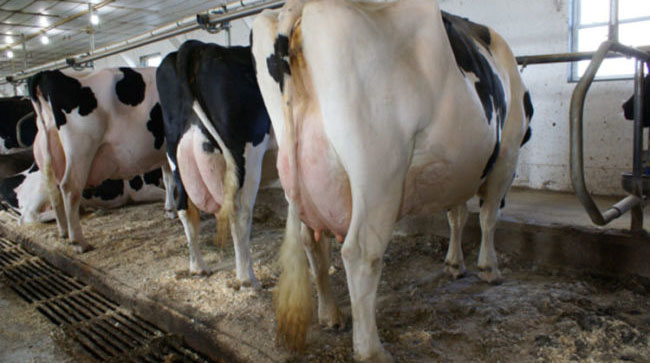Source: Dairy producers bullish on future prospects | Sunday Mail (Business)

Enacy Mapakame
Dairy farmers plan to double milk production, eliminate imports and focus on being net exporters, a development that will boost the country’s foreign currency earnings.
Zimbabwe currently produces about 60 percent of the country’s annual milk demand of 120 million litres.
Imports cover the remaining 40 percent.
Zimbabwe Association of Dairy Farmers (ZADF) chairperson Kudzai Chirima told The Sunday Mail Business that part of the dairy producers’ five-year strategy to 2022 is to make Zimbabwe a net exporter of dairy products again and reduce foreign currency expenditure.
“As ZADF, we have a five-year strategic plan, which seeks to double national milk production at the right price and quality by year 2022. The dairy sector is doing relatively well, despite the prevailing economic challenges,” said Mr Chirima in e-mailed responses.
“Zimbabwe is currently producing slightly above 60 percent of the national annual milk demand, so there are opportunities for growth.
“Although the excess demand is satisfied through imports, this strategy will reduce the need for foreign currency expenditure by year 2022, and it will position the industry to become a net exporter of dairy products once again,” he said.
Already, the country is making significant strides towards improving production, with figures showing steady growth in milk production.
In 2016, the Dairy Revitalisation Programme (DRP) — a private-public partnership programme responsible for the importation of calf heifers — was introduced to boost milk production.
Production increased by 13 percent to 65 million litres in 2016, a jump that was largely attributed to import restrictions and the DRP.
At the end of September 2018, Zimbabwe’s milk output stood at 48 million litres, dampened by the forex challenges.
However, milk production in the first quarter of 2019 was 19,4 million litres, which was 14 percent above same period in the prior year, and dairy farmers remain upbeat of maintaining the growth trajectory by year-end.
Government is also targeting milk production to rise to between 97 million litres to 100 million litres per annum by the end of 2019, leveraging on growing output and sectoral support measures.
Policymakers expect the country to be milk self-sufficient by 2022. However, the dairy sector continues to grapple with shortages of stock feed.
The cost of production also remains an impediment to milk production growth. Zimbabwe used to produce approximately 260 million litres of milk in the early 1990s, but production of raw milk has drastically declined to levels below the annual national demand of 120 million litres, implying a deficit of 45 million litres.
“As a result, dairy experts estimate that the country is spending more than US$84 million annually on importing powdered milk and butter as producers are failing to meet demand, due to lack of foreign currency and a depleted national dairy herd, among other macroeconomic challenges,” said brokerage firm IH Securities in their Zimbabwe Agriculture Report 2019. While local dairy producers and processors have potential to meet demand and increase exports, Mr Chirima said the sector was cognisant of the infrastructure deficits, which need to be addressed to ensure competitiveness on regional markets.
“The Government of Zimbabwe has several policies and mechanisms to support and protect the local production and marketing of milk. However, these are temporary and as a sector, we need to become competitive within the region. Milk processors in Zimbabwe have the capacity, but the infrastructure is currently underutilised and in need of refurbishment,” he said.
He added the sector’s growth will contribute to employment opportunities, boost income for all producers and contribute towards reducing the country’s trade imbalance.
The post Dairy producers bullish on future prospects appeared first on Zimbabwe Situation.